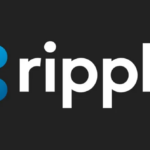Common traits among fast-growing Ethereum DeFi protocols

DeFi lending protocols are on fire right now, thanks to the rising prices of cryptocurrencies that are fueling the demand for leverage. In fact, the amount of cryptocurrencies deposited into decentralized finance protocols has reached its highest level in over two years, all thanks to the current crypto bull market.
Among the DeFi tools that are shining bright, lending protocols are stealing the show. These protocols allow users to deposit their crypto as collateral and take out loans automatically, as long as the borrowed assets’ value is less than their collateral.
One of the main reasons behind the boom in lending protocols, according to Paul Frambot, the founder of lending protocol Morpho, is the increasing demand for leveraged bets. “Market price action has driven a surge in borrowing demand as people want to increase their price exposure,” he explained.
This strategy, known as looping, involves users depositing an asset they believe will increase in value as collateral to borrow stablecoins. They then sell those stablecoins to buy more of their collateral asset, thus increasing their exposure to it.
Since the beginning of the month, the total value locked in Morpho, including tokens borrowed from the protocol, has skyrocketed by 56% to hit an all-time high of $3.8 billion. Total value locked, or TVL, is a measure of the value of assets that a DeFi protocol custodies for its users.
But Morpho is not the only player in town. Deposits have also surged on DeFi lending giant Aave by 42% during the same period, with over $32 billion in TVL. Spark, a lending protocol affiliated with Sky and boasting $5.6 billion in TVL, has seen a growth of 62%. Even smaller protocols like Euler, offering more niche lending options, have experienced a significant increase in deposits, jumping by 576% since the start of the month.
Michael Bentley, the founder of Euler, credits this growth to a more positive outlook for the broader crypto market, driven by growing institutional adoption and a more favorable regulatory environment on the horizon. The rising tide has led to increased borrowing as market participants speculate on rising prices, which has, in turn, led to rising interest rates, attracting yield-hungry lenders.
The increased demand has resulted in lenders consistently earning the highest yields on deposited assets in years. Despite facing a setback last March when an attacker exploited a bug in Euler’s code and made off with almost $200 million of users’ assets, the protocol has since bounced back and is now thriving.
While Ether remains the most in-demand asset on Aave, with almost $5 billion worth borrowed, Euler and Morpho allow users to borrow against a broader range of assets. For example, derivative yield tokens issued by DeFi protocol Pendle account for $450 million of borrowings on Morpho, while on Euler, tokenized versions of US Treasury bills issued by real-world asset protocol Midas are gaining popularity.
In the midst of this boom, even other DeFi protocols like Sky, formerly MakerDAO, are joining the action. Sky recently deployed $650 million of its DAI stablecoin on Morpho to earn yield. However, with the surging appetite for borrowing also comes the risk of a dangerous build-up of leverage that could increase price volatility.
As assets used as collateral decrease in value, there is a potential risk of liquidation where they could be sold off to prevent the protocol from accumulating bad debt. For example, on Aave, over $20 million of Lido staked ETH tokens are at risk of being liquidated if Ethereum’s price falls below $3,292, according to DefiLlama data.
In the fast-paced world of DeFi lending protocols, the key takeaway is to tread carefully, stay informed, and always be aware of the risks involved.



